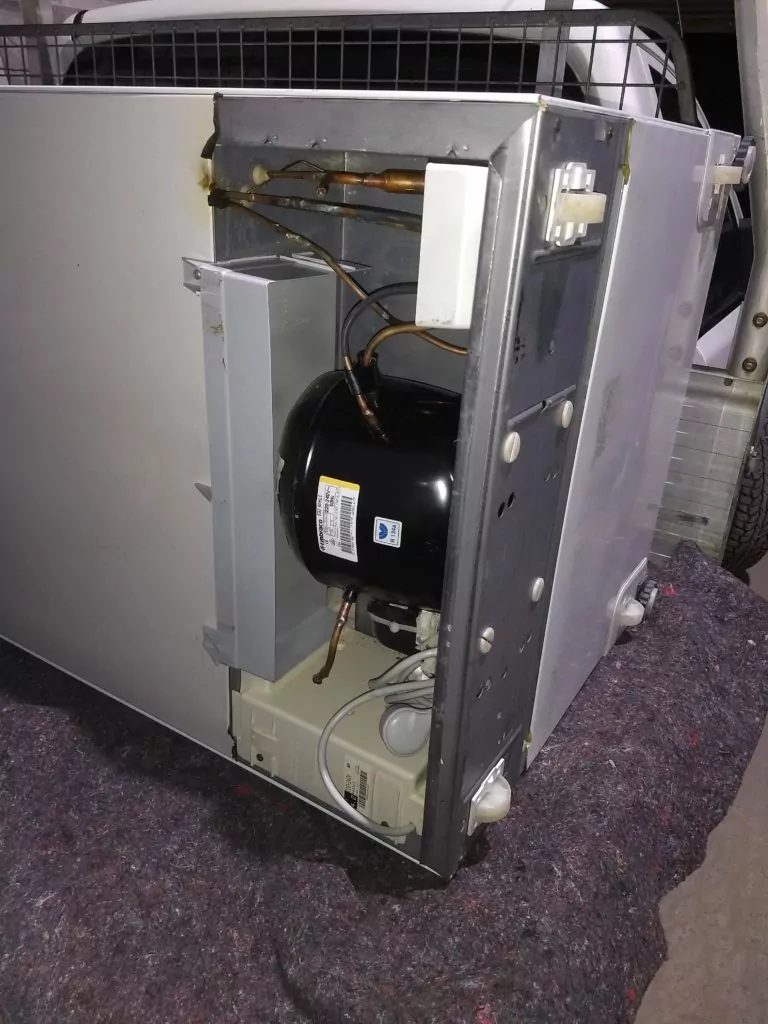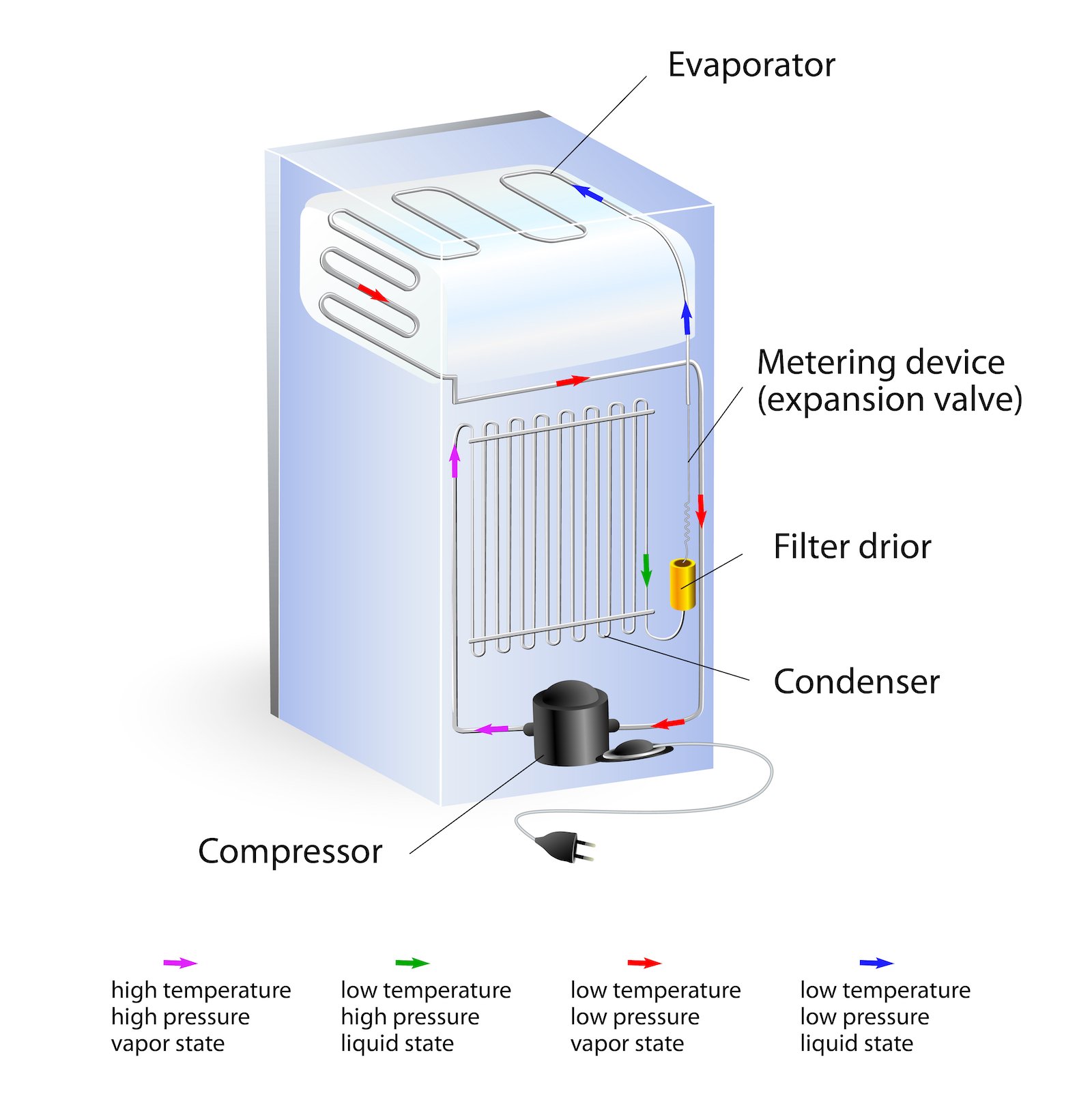No, you should not transport a freezer on its back. Doing so can damage the compressor and affect its performance.
Transporting a freezer requires careful planning to ensure its safe arrival at your destination. Many people underestimate the importance of moving appliances correctly. A freezer is not just a box; it contains sensitive components that can be damaged if not handled properly.
Laying a freezer on its back can lead to oil from the compressor leaking into the cooling lines, which can result in costly repairs. Understanding the right way to transport a freezer can save you time and money. Knowing how to move it upright and secure it can help maintain its efficiency and longevity in your home.
The Right Way To Move A Freezer
Understanding the type of freezer is crucial before moving. There are upright and chest freezers. Each type requires different handling.
Check your freezer’s manual for specific moving instructions. This can help prevent damage. Make sure to empty it and unplug it at least 24 hours before moving.
Defrost your freezer to avoid water leaks. Use towels to soak up any excess water. It’s important to have the right tools for the job.
Gather supplies like dollies and straps. They will help in safely moving the freezer. Protect the freezer with blankets or padding to prevent scratches.
Common Myths About Transporting Freezers
Many people believe that laying a freezer on its back is safe. This is a common myth. Freezers are designed to stand upright. Laying them flat can cause damage to the compressor. It may also affect the cooling system.
After transporting a freezer, let it rest before use. This helps the oil return to the compressor. It is important to wait at least 24 hours. Turning it on too soon can lead to problems. Always check the manufacturer’s guidelines for the best practices.
Potential Risks Of Incorrect Transportation
Transporting a freezer on its back can cause serious damage. The compressor is a vital part of a freezer. Incorrect positioning can lead to coolant and oil displacement. This can result in malfunction or permanent failure of the unit.
When a freezer lies flat, the coolant may not circulate properly. This can lead to overheating of the compressor. Oil can also move into places it shouldn’t be. These factors can shorten the life of your freezer.
Always transport freezers in an upright position. This helps keep everything in its proper place. Ensuring correct transportation will help your freezer work well for years.

Credit: m.youtube.com
Pre-transportation Checklist
Before moving a freezer, ensure all internal components are secured. Use tape or foam to hold shelves in place. This prevents them from shifting during transport.
Defrosting the freezer is important. Remove all food items and unplug the unit. Allow ice to melt completely. Wipe down the interior with a clean cloth to avoid odors.
Cleaning is essential for a smooth move. Use a mild detergent and warm water. Make sure to dry everything thoroughly before transport.
Proper Loading Techniques
Transporting a freezer on its back requires careful planning. Use the right tools and equipment to ensure safety. A sturdy dolly helps move the freezer easily.
Wrap the freezer in moving blankets to protect it. Secure it with strong ropes or straps inside the vehicle. This prevents it from shifting during transport.
| Tools | Purpose |
|---|---|
| Dolly | To lift and move the freezer |
| Moving Blankets | To protect the freezer from scratches |
| Ropes/Straps | To secure the freezer in place |

Credit: www.whybuy.com.au
Post-transportation Steps
After unloading, place the freezer upright. This helps the oil settle properly. Wait at least 4 hours before plugging it in. This allows any fluids to return to their proper places.
Check the power cord for any damage. Ensure the outlet is functioning well. Make sure the freezer is level on the floor. A stable position helps it work better.
Reconnect the power only after the waiting time. Monitor the freezer for any unusual noises. This can indicate a problem.
Hiring Professional Movers
Hiring professional movers can save time and effort. They know how to handle heavy items like freezers. Consider this option if you lack experience or physical strength.
Look for movers with good reviews and experience in transporting appliances. Ensure they offer insurance for your items. This protects your investment during the move.
| Criteria | Details |
|---|---|
| Experience | Look for movers with a track record of appliance transport. |
| Insurance | Choose a company that provides coverage for damages. |
| Reviews | Check online ratings and testimonials from previous customers. |
Faqs About Transporting Freezers
Transporting a freezer on its back is not recommended. This can cause damage to the compressor. If it must be done, take precautions to protect the unit. Always check the manufacturer’s guidelines for safety.
After transporting, wait at least 24 hours before turning it on. This allows the oil to settle back into the compressor. Turning it on too soon can lead to malfunction or damage.

Credit: blog.puls.com
Conclusion
Transporting a freezer on its back can lead to damage and operational issues. Always keep the appliance upright during transport for optimal performance. If you must move it differently, let it rest before plugging it back in. Proper handling ensures longevity and efficiency, protecting your investment for years to come.
